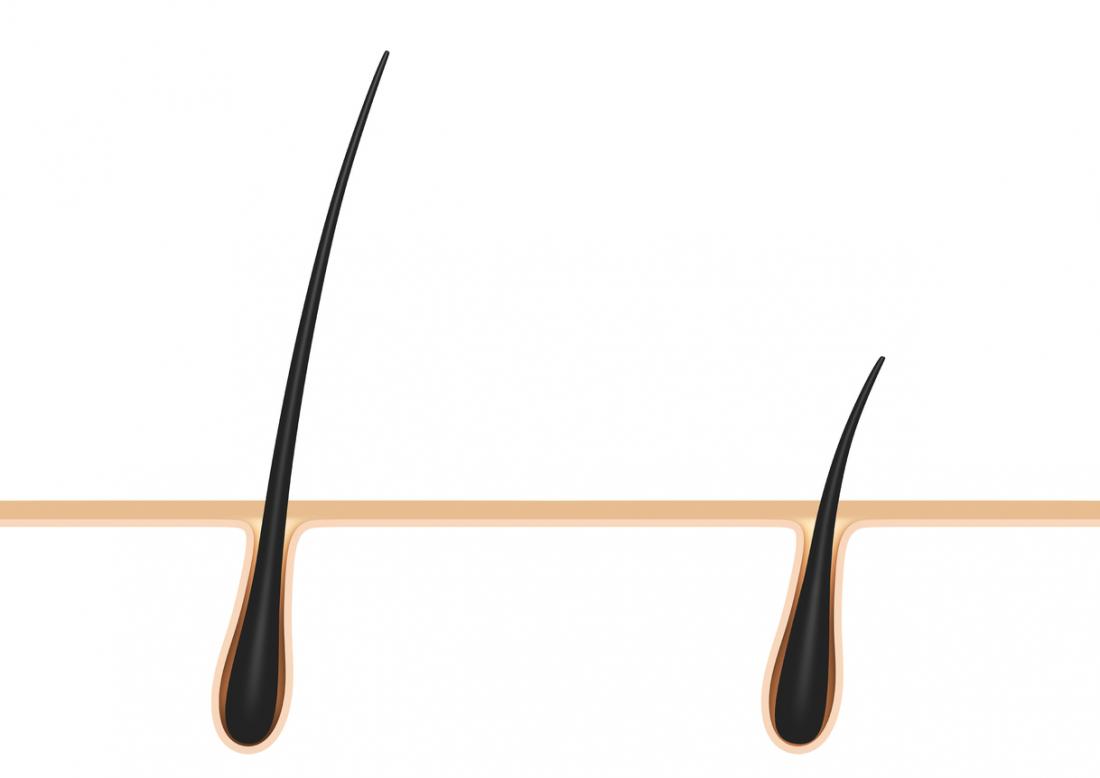Baldness is an accepted part of the aging process for some, and a source of distress for others. Hair loss affects millions of men and women, yet despite decades of research, a cure is still not available. Just how close are we to finding a magic bullet for baldness? Medical News Today take a look at the evidence.

Androgenetic alopecia – which is more commonly known as male pattern baldness and female pattern baldness – is the most common type of hair loss, affecting around 30 million women and 50 million men across the United States.
In men, hair loss begins above both temples and recedes over time to form an “M” shape. Hair also tends to thin at the crown and may progress to partial or complete baldness. In women, the hairline does not recede and rarely results in total baldness, but the hair does usually become thinner all over the head.
Male pattern baldness is hereditary and may be linked to male sex hormones. Male hair loss can start as early as during adolescence. It affects two thirds of men by age 35, and around 85 percent of men by the age of 50.
The causes of female pattern baldness are unclear. However, hair loss happens most frequently in women after menopause, which indicates that the condition may be associated with decreasing female hormones.
With androgenetic alopecia affecting so many people, a permanent cure would not only lessen anxiety for a significant percentage of the population, but it would also prove financially advantageous to the pharmaceutical company responsible for the discovery.
Hair is made up of the hair follicle (a pocket in the skin that anchors each hair) and the shaft (the visible fiber above the scalp). In the hair bulb, located at the base of the follicle, cells divide and grow to produce the hair shaft, which is made from a protein called keratin. Papilla that surround the bulb contain tiny blood vessels that nourish the hair follicles and deliver hormones to regulate the growth and structure of the hair.

Hair follicles, much like all cells, have cycles. A natural part of the cycle involves shedding around 50 to 100 hairs per day.
Each follicle produces hair for 2 to 6 years and then takes a break for several months. While the hair follicle is in its rest phase, the hair falls out. There are around 100,000 follicles on the scalp, but because each follicle rests at a different time and others produce hairs, hair loss is usually unnoticeable. More noticeable hair loss occurs when there is a disruption to the growth and shedding cycle, or if the hair follicle is obliterated and replaced with scar tissue.
Scientists now understand that pattern baldness occurs through a phenomenon known as miniaturization. Some hair follicles appear to be genetically oversensitive to the actions of dihydrotestosterone (DHT), which is a hormone that is converted from testosterone with the help of an enzyme held in the follicle’s oil glands.
DHT binds to receptors in the hair follicles and shrinks them, making them progressively smaller. Over time, the follicles produce thinner hairs, and they grow for a shorter time than normal. Eventually, the follicle no longer produces hair, leaving the area bald.
Source:- medicalnewstoday
